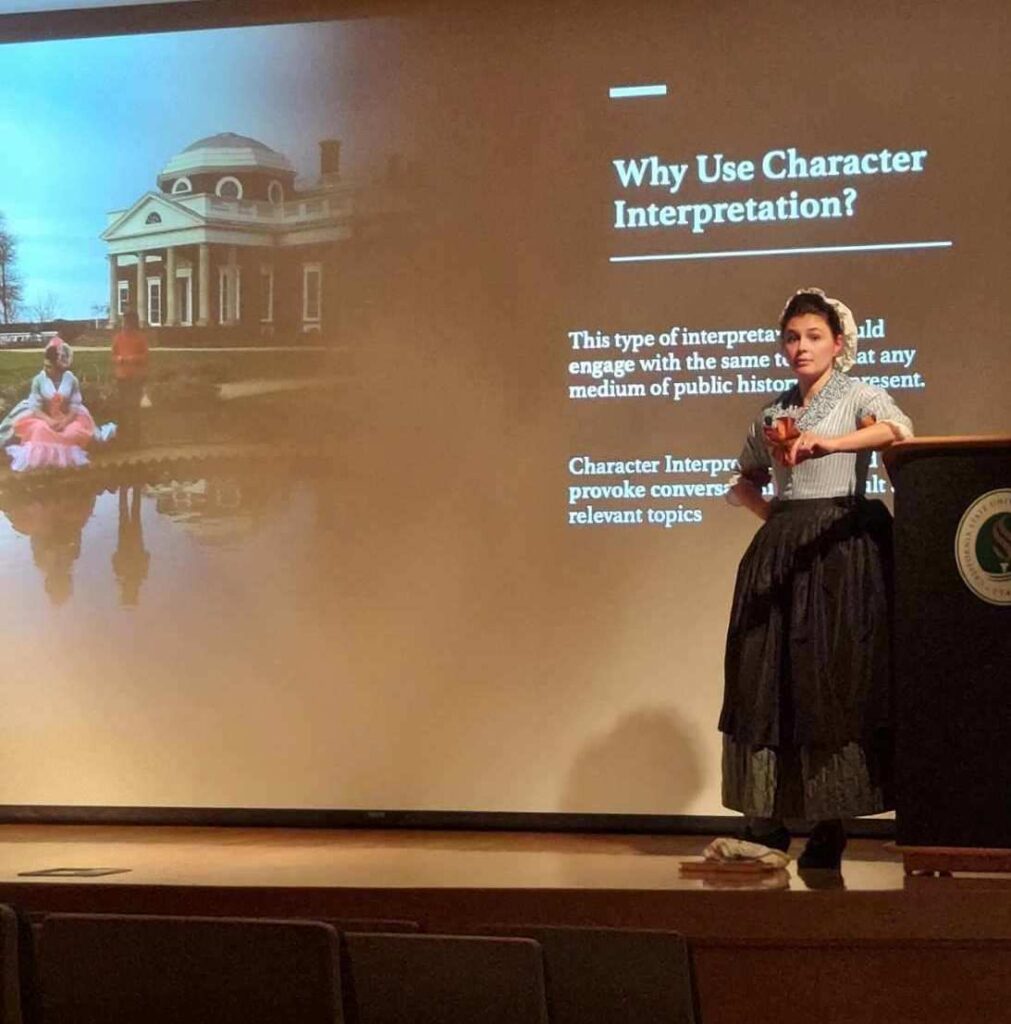By Daniel Pleasant
My initial motivation for joining the William & Mary Bray School Lab was to engage in research relevant to my major. However, my experience at the Bray School Lab has evolved into a transformative journey, prompting me to reflect on my family heritage and the stories of those who preceded me on this campus.
As an African-American male, the Bray School story has facilitated meaningful conversations with older relatives, allowing me to explore firsthand experiences related to societal disparities—whether economic, social, or civil. Since joining, I’ve worked on the Standing in the Gap (SIG) Project, a challenging yet rewarding endeavor focusing on the period after the Williamsburg Bray School closed in 1774 through the termination of operations by the Bray Associates in North American during 1777.
Specifically, my project delves into studying the households of the school’s students and their enslavers during this hiatus. While the W&M Bray School Lab possesses substantial information about the school’s operations, there’s a noticeable gap regarding events post-closure. Understanding this period is crucial for comprehending the Bray School’s functions, revealing what happened to some of the students and their communities between 1774 and 1777.
Despite limited information, the sources gathered for the project have laid important scholarly groundwork, with continuous discoveries through new documents being a particularly enjoyable element of my work. This process not only enriches the “Standing in the Gap” timeline, but also fosters connections within the cohort of Student Thought Partners at the William & Mary Bray School Lab as we share findings and collaborate on projects. Utilizing various sources, including records of business endeavors and the states of enslavers’ households, we explored prominent figures such as John Blair, Lord Dunmore, and Christiana Campbell through the SIG Project.
When looking at these prominent names within the history of the Bray School and its students, it has allowed us to make connections and uncover the particulars between students, their familial networks, and their enslavers. For example, when looking at John Blair, who served as the president of the William & Mary Board of Visitors before 1774, the SIG project gives us the ability to look at the specifics of his household and the treatment of his enslaved individuals. Through the examination of documents, both primary and secondary, we can learn that he owned upward of 15 enslaved people during his lifetime. This included Issac Bee, a learned young man who self-emancipated at the age of 18 and sought freedom.
Furthermore, not only does this timeline incorporate information regarding the relationship between the Bray School and its students, but it also highlights how details regarding the American Revolution may have impacted the entire Black community between the closing of the school in 1774 and the Bray Associates ceasing operations in North America in April 1777. In regards to the revolution, information can be seen through documents regarding Lord Dunmore, who served as the last royal governor of Virginia. In particular, when focusing on the American Revolution, the SIG projects highlight events such as Dunmore’s proclamation declared in November of 1775 which sought to recruit African American troops to fight for the British crown in exchange for their freedom.
Lastly, the SIG project grants us information regarding sites and events that are still relevant to the city of Williamsburg today. This can be seen when we view someone such as Christiana Campbell, a tavern keeper and enslaver who owned multiple lots within Williamsburg. Her tavern operates within Colonial Williamsburg today and is a regularly frequented historical site (although the modern-day tavern was not the official residence of her or her household until 1771). The tavern was an extremely popular location during 1774-1777 as it was frequented by individuals such as George Washington and used to quarter soldiers. The project goes even further by connecting the tavern with the events that transpired during the American Revolution by establishing its closing in 1776 due to “critical times.”

On a broader scale, our project involves engaging potential in-person sources, like descendants of Bray School students or enslavers, still in the Williamsburg area. These interactions provide unique insights not found in traditional historical records, thereby expanding our ability to share the unfiltered history of the campus with its students.
Soon, I could see the project expanding and potentially involving other minority groups on campus whether that be school-authorized cultural organizations or through the Center for Student Diversity. I hope that students across the campus will start to get a better sense of what came before them and to evoke a feeling of genuine awareness of William & Mary’s history. The Bray School Lab has become a focal point of my time at William & Mary, and I’m pleased to contribute weekly to the community that helps shape our campus today.

Daniel Pleasant is currently a Junior majoring in Government and a Student Thought Partner at the W&M Bray School Lab. He has served as a Student Thought Partner since the fall of 2022.










